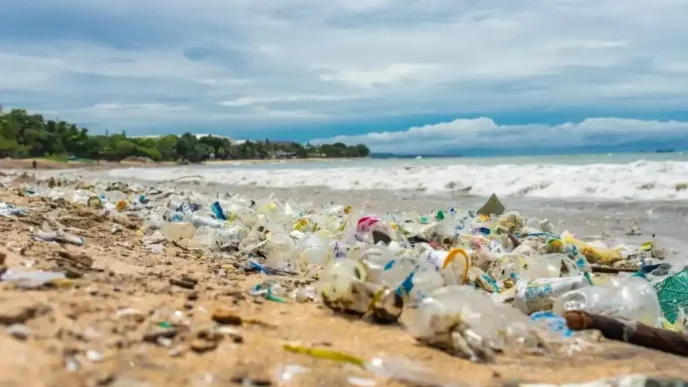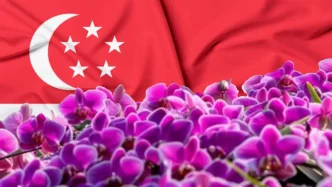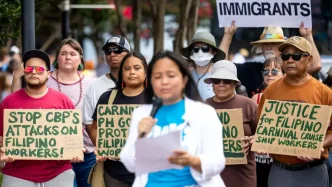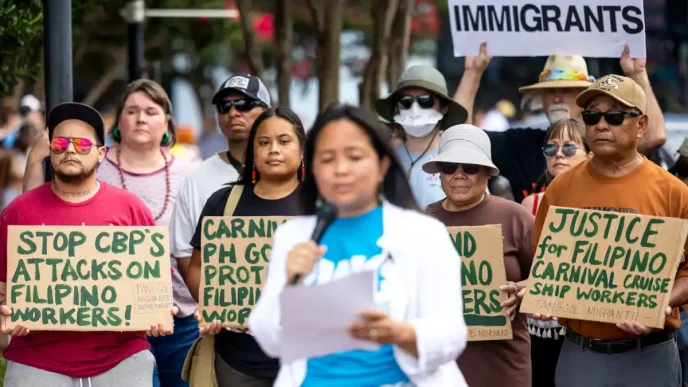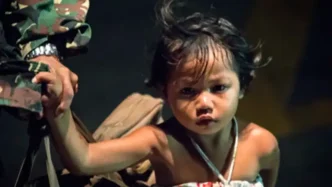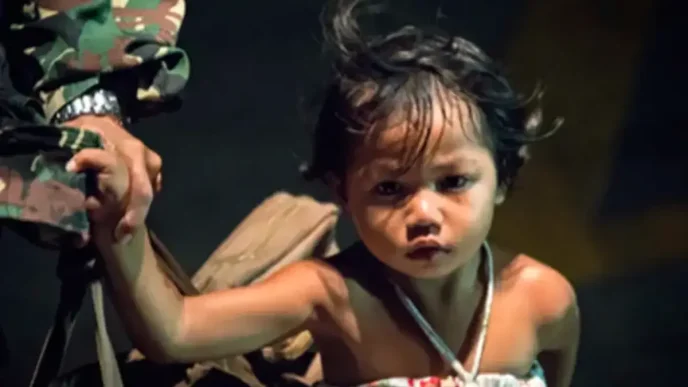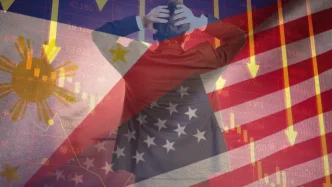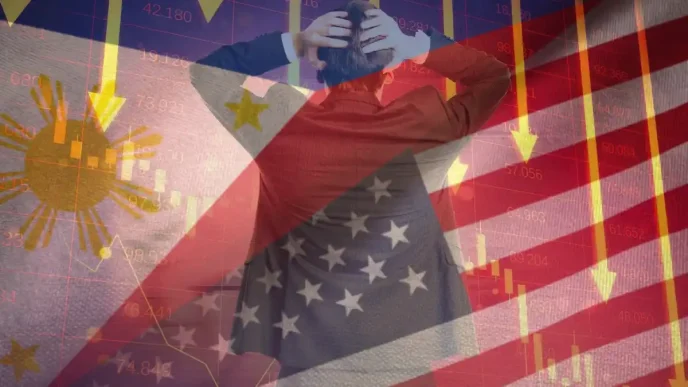In the rugged terrains of Vietnam’s border regions, from the jagged mountains of Cao Bằng to the coastal outposts of Quảng Trị, border guard officers stand as sentinels of national sovereignty. Yet, their role extends far beyond mere defence. Tasked with safeguarding the nation’s frontiers, these soldiers are also deeply embedded in the socio-economic fabric of remote communities, fostering development and resilience in areas often overlooked by urban-centric policies. Their dual mission of security and progress is not just a duty but a lifeline for many living in Vietnam’s most isolated regions.
A Dual Mission: Security and Stability
Vietnam’s border guards operate in some of the country’s most challenging environments. In Cao Bằng Province, where the border stretches over 330 kilometres, complex criminal activities such as smuggling and human trafficking pose constant threats. The Cao Bằng Border Guard Command has responded with intensified efforts, conducting 1,615 patrols in 2024 alone, mobilising over 18,360 personnel, and clearing more than 392 kilometres of routes. Their collaboration with international counterparts through 17 joint patrols further underscores a commitment to regional stability.
At the Trà Lĩnh international border guard station, which oversees nearly 29 kilometres of boundary, vigilance against illegal crossings remains paramount. Lieutenant Colonel Vũ Văn Dương, the station’s Political Commissar, emphasises the importance of community engagement in this fight. By fostering awareness among residents and encouraging them to report illicit activities, the border guards have created a seamless security apparatus that integrates local participation—a model of defence that is as much about trust as it is about enforcement.
But security is only half the story. Embracing the ethos of “the station is home, the border is the homeland, and ethnic minorities are family,” these officers are also agents of change. In regions where poverty and isolation often define daily life, their contributions to socio-economic development are transformative, offering a glimpse of hope amid hardship.
Building Communities, One Home at a Time
In Cao Bằng, the border guards have played a pivotal role in eradicating over 7,000 makeshift and dilapidated houses in 2024. Their efforts go beyond mere infrastructure; they are about dignity and health. Chu Thị Cài, a resident of Bản Khâu Village in Hạ Lang District, experienced this firsthand. After awareness campaigns by border guards and local authorities, she moved her livestock pen away from her stilt house. “Our home is cleaner now, my children are healthier, and even my own well-being has improved,” she told Tin Tức newspaper.
Similarly, in Quảng Hòa District, Major Nguyễn Vũ Lê of the Tà Lùng International Border Gate Guard Station led initiatives to raise funds for impoverished families. Đàm Thị Nguyệt, a widow raising two children in a crumbling home, received VNĐ44 million (approximately US$1,720) to build a new house. Her story is one of many where border guards have stepped in to secure not just borders, but brighter futures.
In Thanh Hóa Province, at the Na Mèo International border guard station—the only land border gate linking Vietnam and Laos—community empowerment is central to their strategy. Through the “all people participate in protecting border security” movement, locals have provided 135 intelligence reports over the past decade, leading to the resolution of 113 administrative violations. Residents like Vi Văn Hợi of Cha Khót Village, who volunteer as guardians of border markers, express pride in their role. “Thanks to their training, we now understand the importance of border protection,” he said.
Agricultural Innovation and Cross-Border Collaboration
Beyond housing and security, border guards are also driving agricultural innovation. In Na Mèo Commune, they have introduced double-cropping wet rice cultivation, boosting yields by over two tonnes per hectare in three Mông ethnic villages—Ché Lầu, Mùa Xuân, and Xía Nọi. Their collaboration with Viengxay District in Laos has further expanded dry-season wet rice farming across 60 hectares, enhancing food security on both sides of the border.
Lieutenant Colonel Trương Văn Hải, head of the Na Mèo border guard station, describes this integration as key to their mission. “By embedding ourselves in local communities, living and working alongside them, we help raise awareness, foster unity, and contribute to lasting peace and development,” he said. This approach not only strengthens ties with locals but also builds bridges with neighbouring countries, creating a shared stake in stability.
Nurturing the Next Generation
Perhaps most poignantly, border guards are also guardians of Vietnam’s future. Through initiatives like the “border guards adopting children” programme and supporting students’ education, they provide critical assistance to disadvantaged youth. Trần Cát Nguyên Vũ, an eighth-grader at Hải An Secondary School in Quảng Trị Province, is one such beneficiary. Orphaned at a young age, he was taken in by the Hải An border guard station in 2019 under the care of Major Hồ Ngọc Việt. “At first, I was scared and uncertain, but thanks to the kindness of the border guards, especially ‘Dad Việt,’ I now feel safe and supported,” Vũ shared.
Major Việt, reflecting on his role as a guardian, admits the responsibility is immense. “I worry about him as much as I do about my own children. It’s a big responsibility, but it’s worth it,” he said. Similarly, Nguyễn Thị Hồng Ngọc, a sixth-grader from Hải Khê Primary and Secondary School, has received monthly support of VNĐ500,000 since 2019, enabling her to continue her education despite financial hardship. Since 2016, the Quảng Trị Border Guard Command has provided foster care for 24 children and financial aid for 71 students, funded by officers’ contributions and charitable donations.
Challenges and the Road Ahead
Despite these achievements, the challenges facing Vietnam’s border guards are significant. The sheer scale of criminal activities in border regions, from drug trafficking to illegal crossings, demands constant vigilance and resources. In Điện Biên Province, for instance, border guards have also had to assist communities in recovering from natural disasters, such as the devastating flash flood on 25 July 2024, helping residents clean up homes and restore their environment. Balancing these humanitarian efforts with security imperatives stretches their capacities thin.
Moreover, while their socio-economic initiatives have yielded tangible results, sustaining these efforts requires broader governmental support and funding. The eradication of makeshift housing and the introduction of agricultural innovations are steps forward, but systemic issues like poverty and lack of infrastructure in remote areas persist. If unaddressed, these could undermine the long-term impact of the border guards’ work.
There is also the question of scalability. While community engagement models like the one in Na Mèo are effective at a local level, replicating them across Vietnam’s vast and diverse border regions—each with unique cultural and economic dynamics—presents logistical and policy challenges. If these models are to be expanded, tailored approaches and increased collaboration with local authorities will be essential, though no concrete plans have been confirmed at this stage.
A Pillar of National Strength
Vietnam’s border guards embody a unique blend of protector and provider, securing the nation’s frontiers while uplifting its most vulnerable communities. Their work in places like Cao Bằng, Thanh Hóa, and Quảng Trị is a testament to the power of integrating security with development—a model that not only fortifies borders but also builds resilience from within.
As Vietnam navigates the complexities of regional security and domestic growth, the role of these guardians will only grow in significance. They are not just soldiers; they are builders of homes, nurturers of futures, and keepers of peace. In their hands, the border is more than a line on a map—it is a homeland, a community, and a shared dream of a stronger, more united nation.




